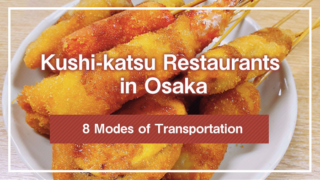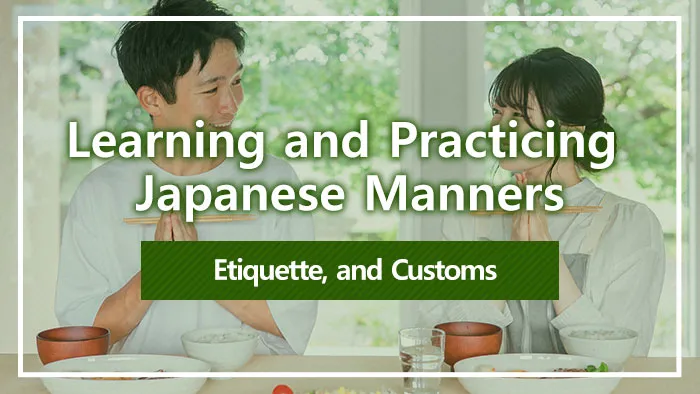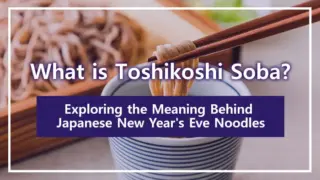Japan has detailed manners woven into every aspect of life—greetings, expressions of gratitude, daily activities, dining, and gift-giving. These customs are not mere formalities but tangible expressions of thoughtfulness toward others. For example, a light bow and a deep bow are important acts that demonstrate respect.
Furthermore, saying “itadakimasu” before meals and “gochisousama” afterward, as well as the practice of giving and receiving gifts with both hands, symbolize the courtesy that Japanese people have cultivated. Understanding these manners is the first step toward showing respect for Japanese society and fostering pleasant interactions. This article explains the manners you should know when visiting Japan.
1. Greetings and Expressions of Gratitude: Customs and Etiquette
In Japan, performing a bow during greetings and expressions of gratitude is a fundamental manner. a bow is an act of conveying respect and appreciation to others and holds a very important place in Japanese culture.会釈 (a slight nod of the head) is used for casual daily greetings, while a respectful bow and a deep bow with the torso bent significantly are used when greeting superiors or in formal situations. In all cases, the proper posture involves keeping your back straight and bending from the waist.
A bow is performed not only for greetings but also when expressing gratitude, apologizing, or making requests. For example, when saying “arigatou gozaimasu” (thank you) or “moushiwake arimasen” (I’m sorry), many people naturally add an a bow. In business settings, it is customary to bow before and after exchanging business cards. Additionally, at hotels and department stores, employees may bow while placing their hands together in front of their stomach—this is a particularly polite style unique to the service industry.
For foreign tourists as well, adding a light a bow can convey respect to others and become an opportunity to build better relationships.
2. Customs and Manners in Daily Life
引用:unsplash.com
In Japan, many customs of courtesy and consideration are deeply rooted in daily life.
Removing shoes indoors, maintaining quiet on public transportation, and wearing a mask when unwell are natural behaviors for Japanese people. These manners stem from a culture that values consideration for others and cleanliness.
For foreign tourists, understanding and practicing these customs allows them to naturally blend into Japanese life.
2-1. Removing Shoes Indoors
In Japan, it is basic etiquette to remove your shoes before entering homes, ryokan (traditional inns), temples, and other indoor spaces. The genkan (entryway) serves as the boundary between the “outside” and “inside,” and the practice of removing shoes before stepping up is rooted in the idea of keeping indoor spaces clean. The genkan has a lower section where, after removing your shoes, you should arrange them neatly with the toes pointing toward the door.
Many accommodations and homes provide slippers. When entering a tatami room, remove your slippers and leave them outside. Restrooms often have dedicated slippers, and it is proper etiquette to return them to their original place after use.
2-2. Keeping Quiet on Trains and Buses
On Japanese public transportation, maintaining a quiet environment is considered proper etiquette. Keep conversations minimal on trains and buses, and especially avoid phone calls. Set your mobile phone to silent mode, and be mindful of those around you during crowded times. When boarding, allow passengers to exit first and wait in line to maintain order.
When seated, keep your belongings on your lap or at your feet rather than placing them on adjacent seats. If elderly people, pregnant women, or persons with disabilities are nearby, offering your seat is the appropriate action. Also, avoid eating or consuming strongly scented foods.
Maintaining a quiet environment is an expression of consideration for other passengers.
2-3. Wearing a Mask When Unwell
In Japan, it is common to wear a mask when feeling unwell. This practice aims to prevent spreading colds, coughs, and other symptoms to others, and is one aspect of the culture of consideration. Rather than being primarily for medical purposes, it is ingrained in daily life as “courtesy toward those around you.”
When wearing a mask, ensure it covers both your nose and mouth properly, and remove it quietly in an area away from others when needed. When blowing your nose, use a private space like a restroom and try to minimize noise.
In Japan, wearing a mask is considered an act of protecting not only oneself but also the peace of mind of those around you. Even if you become ill during your travels, wearing a mask demonstrates respect for local culture.
3. Dining Customs and Manners
At the Japanese dining table, “cleanliness” and “gratitude” are emphasized. By mastering the basics of dining etiquette, you can enjoy meals comfortably at any establishment.
3-1. Putting Your Hands Together Before Meals
In Japan, once the food is served, people put their hands together and say “itadakimasu” before beginning to eat. This phrase is an important greeting that expresses gratitude to the cook and the ingredients. If someone’s meal is delayed, it is polite to say “osaki ni douzo” (please go ahead) or “saki ni itadakimasu” (I’ll start first). Small bowls and gohan chawan (rice bowls) should be held in your hand and brought closer to your mouth for easier eating and a neater appearance.
3-2. Chopstick Etiquette
Hold chopsticks by moving the upper stick to pick up food while keeping the lower stick stationary. When finished, place them horizontally on a hashi-oki (chopstick rest). Sticking chopsticks vertically into gohan (rice), passing food from chopsticks to chopsticks, or stabbing food are taboo practices. These actions evoke funeral rituals and should be avoided. Licking the tips of chopsticks, waving them around, or pointing them at others is also impolite.
When taking food from shared plates, use serving chopsticks or use the opposite end of your own chopsticks to transfer food to your plate. With disposable chopsticks, it is generally not appropriate to rub them together after splitting them. If using chopsticks is difficult, feel free to ask for a spoon or fork without hesitation.
3-3. Slurping Noodles is Acceptable
In Japan, slurping noodles such as ramen, soba, and udon is not considered a breach of etiquette. Drawing noodles vigorously into your mouth enhances their aroma and makes it easier to eat hot soup. If a renge (Chinese spoon) is provided for the soup, use it; if not, hold the bowl in your hand and bring it to your mouth to drink. Once you lift the noodles, bring them to your mouth without letting them hang too long, and be careful not to splash those around you.
Avoid eating noisily with your mouth open, burping, or blowing your nose at the table. If necessary, excuse yourself and handle it quietly in a restroom or similar space.
3-4. Saying “Gochisousama” When Finishing a Meal
When you finish eating, close any lids on bowls, return your chopsticks to the hashi-oki, tidy the table, put your hands together and say “gochisousama deshita.” This greeting expresses gratitude to the cook, the server, and the ingredients. Try to finish all your gohan if possible, and if there are foods you cannot eat, it is reassuring to mention this in advance.
At many restaurants, payment is made at the register, and it is common to place cash or cards on the payment tray. Return shared plates and dishes to their original positions, and lightly tidy your area before leaving the table for a polite impression.
4. Gift-Giving Manners and Customs
In Japan, gift-giving is an important gesture that facilitates smooth relationships. Appropriate items are selected for each occasion, such as temiyage (gifts brought when visiting), omiyage (souvenirs purchased during travel), and seasonal gifts like ochuugen (summer gifts) and oseibo (year-end gifts).
Wrapping reflects thoughtfulness and care; items should be cleanly wrapped in boxes or paper bags, preferably in the store’s bag if possible. When presenting or receiving gifts, both parties should use both hands, and adding a brief word of thanks or greeting is polite. When visiting, present the gift early after arrival, and it is considerate not to pressure the recipient to open it in your presence.
Recipients customarily express gratitude later through okaeshi (return gifts) or thank-you notes. What matters most is not the expense but the thoughtfulness and appropriateness of the selection for the occasion.
Conclusion
Japanese manners and customs have developed with consideration for others at their core. From bow and greetings to dining, gift-giving, and behavior in public spaces, meticulous attention to detail is ingrained in the culture. Even for visitors from abroad, being mindful of these practices is important for building smooth relationships.
Japanese manners express not only “courtesy” but also “a heart that cherishes others.” By understanding their essence and gradually practicing them in daily life, you can gain a deeper appreciation for the richness of Japanese culture.



























